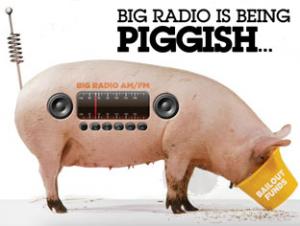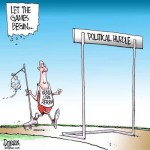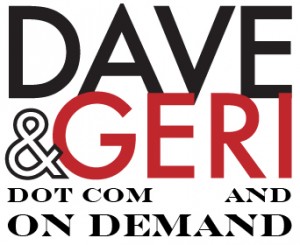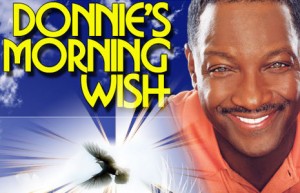Archive for the ‘Social media’ Category
Opportunity Knocks In Saratoga County, NY!
If you’re looking for quality of life, new career opportunities and a place that’s stepping up to the challenge of change in the 21st century, consider New York State’s Tech Valley Region.
Saratoga is equidistant from Boston, New York City and Montreal. Winters aren’t too hard, summers aren’t too hot. If you like outdoor activities, you’ll like it here.
Learn more at www.saratogaedc.com
The Way You Read Magazines Is About To Change
The way you think of and read magazines is about to change. Watch this short video about how Viv is creating editorial content for their digital-only magazine specifically with the iPad in mind.
RIAA’s Piggy Radio Stunt

This week, the RIAA sent 5 people to the National Association of Broadcaters’ headquarters in Washington DC with a blow-up pig to protest NAB’s stance against the Performance Rights Act. NAB responded by sending them a sausage pizza.
Dennis Wharton, the NAB’s Executive VP says:”It’s no surprise that RIAA is now employing silly frat-boy stunts, given its well-documented practice of suing college kids to rescue a bankrupt business model. It also seems appropriate for RIAA to use an inflatable pig as its mascot, since its foreign-owned members would be the biggest beneficiaries of performance tax pork. RIAA is losing this issue on Capitol Hill and in the court of public opinion, and today’s demonstration represents a new low in a campaign of utter desperation.”
About the sausage pizza, Wharton noted, “We’re suggesting they provide this food to the scores of exploited musicians who have had to sue their record label to recoup allegedly unpaid album royalties.”
As music industry veteran Steve Meyer notes in his DISC & DigitalAudioTechnology (Music & Digital Audio/Video News):
“All the artists who have earned a whole lot of money from selling a whole lot of records from a whole lot of radio play should think twice before they try and get what they wish for. Because if the Performance Tax is ever passed, a whole lot of newer artists won’t have the same ability to make a whole lot of money from record sales because they will most likely not receive the same whole lot of airplay. But that’s my opinion.”
“Back to the RIAA and their lame brained stunt. Labels fund the RIAA, and they should demand the costs of the stunt be deducted from the salaries of all those in the association who thought it was a good idea to draw attention to a matter so far removed from the public’s consciousness. It accomplished nothing and it allowed the NAB to retaliate with words the public is more likely to side with.”
(Read Steve’s weekly newsletters at www.freewebs.com/stevemeyer )
I like the sausage pizza move and Wharton’s responses but, unfortunately, visuals tend to trump the written and spoken word with we humans so I think that radio broadcasters need to respond with their own creative and iconic visual to represent the greedy labels and those ungrateful artists who dismiss FREE promotion and advocacy of their work as having no value.
Any suggestions?
Note to MusicFIRST: In a survey of its readers the broadcast trade, INSIDE RADIO asked if the Performance Rights Act were passed would they consider switching their music-formated radio stations to talk, sports or news programming. More than half (52%) said yes. A third of those responding said that their decision would be based on the size of the royalty payments.
musicFIRST Misleads Again
musicFIRST is at it again.

Yesterday, Dionne Warwick was in Washington trying to persuade Congress to pass the Performance Rights Act. According to Dionne, “This is a critical issue for not only those of us who have made music our careers, but for those who are trying to make a name for themselves in the business. Performers from every genre of music should be fairly compensated for their art. Thus far, radio is the only medium that fails to provide artists with fair compensation for the use of their music and we feel it is time for radio companies to join Satellite, Internet, and Cable music distributors in giving musical artists what they have worked so hard to earn.”
I’m sorry, Dionne but could we review your tax records for the past 45 years? I would suspect that a lot of money has flowed into your personal account primarily because of the FREE exposure and promotion you received from radio stations playing your songs in high rotations and on-air personalities reinforcing your brand by praising your talent. I’m sure that your contract with your record labels was designed more in their best interest than yours but that’s not radio’s fault. What all that FREE exposure on radio did for you, however, was increase audience awareness of your talent, increase your TV exposure, increase demand for your live performances and increase the fees you could demand for those performances. Seems to me that you profited nicely from all that FREE exposure.
And before someone posts the same lame comment about radio gets free use of our airwaves and we the people own the airwaves, it would be useful to remember that radio stations are granted short-term licenses to access those airwaves with the promise to operate in the public “interest, convenience and necessity”. Then, companies must invest millions of dollars in order to build their facilities, purchase the equipment, pay the electric bills (which can run into the hundreds of thousands of dollars a year), pay the personnel (on-air staff, engineers, support staff, sales people, management), pay a large
percentage of gross advertising revenues to music rights companies (BMI, ASCAP, SESAC) and pay local, state and federal taxes. If times are good and the station does a good job of serving its listeners, it can earn a nice profit. If times are tight, it can lose money even if it’s doing a good job of serving its audience. So, saying that radio gets “free” use of our airwaves is a bit misleading.
It amazes me that the artists who support musicFIRST’s efforts don’t understand that if the RIAA gets its way and forces radio to start paying for the right to play songs then fewer stations will choose to continue playing music and those stations that do continue to play music will become more selective about what they play. If a station is paying for songs, its budget will dictate that it choose the most cost-effective tunes which will be obvious hits by artists with established track records. Consequently, playlists will become even tighter. I’m not sure that’s the goal that the musicians supporting musicFIRST are trying to accomplish.
How Can Small Business Benefit From Augmented Reality?
Augmented Reality promises to integrate existing internet content into a physical context which can benefit small businesses.
Jeremiah Owyand points out in his blog that the businesses which can benefit from Augmented Reality include “Any retail or commercial entity with a physical space, any company that sells physical products, any company that does advertising in real life” http://www.web-strategist.com/blog/category/augmented-reality/
According to Owyand, in spite AR’s promises its biggest challenges will be creating useful applications instead of things which simply appeal to the geeky among us.
In this clip, GoWeb3D’s founder, Dave Elchoness shows Augmented Reality in action.
And this short video about using AR to buy a car is fun
Augmented Reality Gets More Mainstream
In January, I wrote about Pranav Mistry’s Sixth Sense. You can see the video from his TED presentation by scrolling down on this page to the entry titled “Ready To Have Your Reality Augmented?” Sixth Sense is very futuristic but you know that augmented reality is going mainstream when a company like GE starts using it in their presentations.
Check out this video by Steve Garfield:
Order Steve’s new book, “Get Seen:Online Video Secrets to Building Your Business” using the Amazon link on the left side of this page.
Rx: A Healthy Dose Of Humor


Opponents of President Obama’s health care proposals need to come up with something as entertaining as this bit from The Daily Show:
| The Daily Show With Jon Stewart | Mon – Thurs 11p / 10c | |||
| The Apparent Trap | ||||
|
||||
Grammy Awards Winners Suckered By Industry Spin

Many artists at this year’s Grammy Awards signed a letter which the Recording Academy intends to send to Congress regarding the controversial Performance Rights Act. Daryl Friedman, a VP for the Recording Academy says: “In speaking to these talented artists, I heard three constant refrains. First, their concerns for background singers and musicians and older legacy artists who need to be fairly compensated; second, their willingness to sit down with radio to work out a solution; and third, if radio still refuses to talk, their commitment to take the fight to Washington.”
The Grammy Week January 2010 statement reads as follows:
“We, the undersigned artists, believe in the partnership between music and radio. We believe that artists (including the background singers and musicians and the great legacy artists of the past decades) deserve to be compensated when their music is used by radio. We support the Performance Rights Act because it is fair to radio and fair to artists. We encourage the radio industry to work with the music community and Congress to pass The Performance Rights Act. Together, we can create a true partnership that benefits radio, artists and musicians, and fans.”
Artists who signed the statement include Nitty Gritty Dirt Band, Tre Cool, Mike Dirnt and Billie Joe Armstrong of Green Day, Stephen Stills, Kenny Aronoff, Sheryl Crow, Anthony Kiedis, Chad Smith and Flea of Red Hot Chili Peppers, Phil Soussan, Jackson Browne, Don Was, Dave Matthews, Josh Groban, Travis Barker, Andrea Bocelli, Apl.de.ap, Taboo, Will.i.am and Fergie of Black Eyed Peas, Drake, Mary J Blige, Mick Fleetwood, Stevie Nicks and David Foster. Recording Academy President and CEO Neil Portnow says, “Standing right behind them are thousands of unknown and up-and-coming music makers who face the question of survival every day. In the coming decade, unless they can make a living at their craft, the quality and creativity of the music will be at risk.”
These artists have, of course, been brainwashed by the record industry spin machine. They don’t seem to understand that passage of the Performing Rights Act will result in fewer music-focused radio stations. Their assumption is that, since music-intensive radio has provided free commercials for their recorded music for the past 5 decades, stations will continue to do so. Perhaps they don’t realize that the reason radio stations became music-intensive was because music provided a mutually-beneficial symbiotic relationship for the radio and music industries: cost-effective programming for the stations and free promotion for the record labels. If the Performance Rights Act is passed, station management will decide that it’s more cost-effective to air talk programming, artists will receive less exposure and the record labels will continue to lose money.
Update: With Congress back in session, both the the National Association of Broadcasters and MusicFIRST have amped up their lobbying efforts. The NAB’s campaign is pretty innocuous, Stop The Performance Tax. MusicFIRST, however, has decided to play nasty. Here’s the logo for their site, PiggyRadio.com 
Radio Changes Mean Opportunity
This week, Donnie Simpson ended his career on broadcast after a 41 year career, 32 of those in Washington, DC radio. Donnie’s not the first nor the latest major morning show talent to leave the industry over the past few years. As the competition for advertising dollars becomes more fierce and the slices of the pie become increasingly smaller, traditional radio broadcasters have been looking for ways to cut costs.The introduction of Arbitron’s people meter and its real-time PPM ratings have influenced how management thinks about morning show talent. People smarter than me including Larry Rosin, Mark Ramsey, Alan Mason, Fred Jacobs and Jerry Del Colliano have commented on radio management’s interpretation of those PPM results and I’d encourage you to read their always insightful blogs.
The net result, however, is that talented personalities like Donnie Simpson will no longer be available on traditional radio. However, I suspect that this situation will actually work in their favor. These personalities are well-liked and trusted by their listeners. They are brands unto themselves. With a relatively small investment, they can work out of their home and create their own daily podcasts which their followers (Seth Godin would refer to Donnie’s listeners as his “tribe”) can access and listen to at their convenience. Businesses which achieved a positive return-on-investment (ROI) by advertising on Donnie’s show can cost-effectively target that audience by supporting his podcast. And he doesn’t have to share the revenue because he’s eliminated the corporate middleman.

A model for this approach is already in operation in Grand Rapids, MI. Dave Jagger and Geri Jarvis’s morning show was canceled in 2008. They launched their daily podcast last summer with financial support from a local bank that had been an advertiser on their radio show. It’s been reported that they’re getting 35,000 hits on their podcast download and over 18,000 daily visits for Dave & Geri On-Demand. It’s estimated that they’ll gross $ 100,000 for their first year. And, of course, they won’t have to share that income with station owners.
In the not-too-distant future, internet access will become ubiquitous on car dashboards. As happened when homes became cable-connected, during the next 10 years the playing field for broadcast radio, internet radio stations and podcasters will be leveled.
A study sponsored by the Association for Downloadable Media and presented this week by Edison Research’s Tom Webster shows that podcast listeners tend to be educated, affluent and receptive to sponsorship messages from trusted podcasters even though they hate advertising on commercial radio and TV.
Smells like opportunity to me.
(Thanks to Rit Ranger for suggesting this blog)
Help Haiti Now
Tracy Kidder, author of the book Mountains Beyond Mountains about Partners in Health founder, Paul Farmer, wrote in the New York Times that with the destruction of so much of Haiti’s already inadequate medical infrastructure, “Partners in Health probably just became the largest health care provider still standing in all Haiti”.
According to a PIH spokesperson, Partners In Health’s nine hospitals, staffed with more than 100 doctors and 500 nurses, are all miles from the quake’s epicenter and escaped major damage. The organization is working to set up emergency operations in Port-au-Prince, but in the meantime has established a triage center at its headquarters in Cange to deal with a stream of earthquake victims — patients with broken bones, deep cuts and even limbs severed by falling debris. But they need money to replenish their rapidly dwindling supplies. If you’d like to help..


